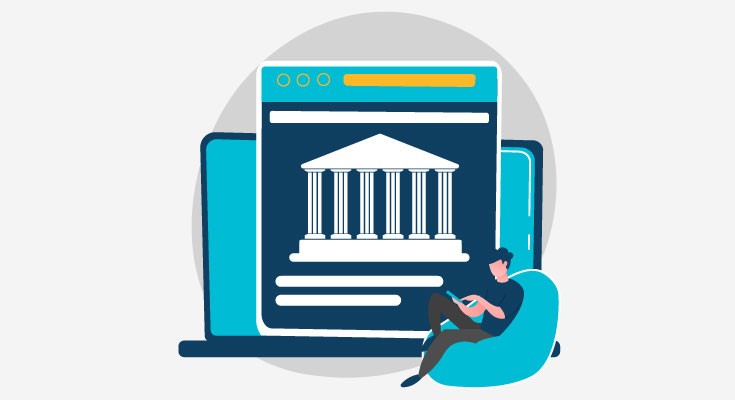Open Banking Initiatives Around the World

Open banking has become the “IT” word of the financial industry. But, it is not just for creating hype, open banking has some incredible real-world applications.
In case you’re not familiar with open banking, it’s the process of banks and other institutions allowing customers to share their financial data with trusted entities. Open banking/open finance makes bank-to-bank payments easier and allows customers to access all their data in a single place. Everyone here at DIRO and other financial institutions considers open banking to be the future of the financial industry.
If you don’t have the right knowledge, it may be hard to understand the benefits open banking brings to the table. There are multiple levels of open banking that offer different features.
In this guide, we’ll go over different open banking models, and how countries all over the world are utilizing them to their benefit.
Brief History of Open Banking Around the Globe
The term “Open Banking” first came onto the scene in July 2013, with the launch of the EU’s PSD2 proposal. In which it was recommended that banks allow trusted third-party sources to access customer financial data. These early suggestions went on to become the Open Banking landscape of today.
Jump to 2022, and Open banking has become a global phenomenon. At least 87% of countries have some type of open banking API. In the European Union, there are over 400 third-party service providers. They are authorized to access financial data using open banking.
State of Open Banking Framework Around the World
Each country has its own way of leveraging an open banking framework. Here’s a peek into the current open banking landscape across the world:
1. State of Open Banking in the UK
Open Banking regulations in the UK require the top 8 banks to create APIs that third-party service providers can use. These APIs have to establish a secure way of data sharing.
The deadline to create these APIs was all the way back in January 2018. While the regulation only asked the 9 banks to create these APIs, other institutions automatically followed suit.
In the UK, third-party service providers can use the Open banking API in two ways.
The TPPs can be Account Information Service Providers, which allows them to get access to payer information and data including balance information and verification.
Or, the TPPs can be Payment Initiation Service Providers, which allows them to make instant bank-to-bank payments, without needing a card, manual transfer, or direct debit transaction.
The UK is definitely leading the charts when it comes to open banking frameworks, innovation, and customer inclusion. Based on a Report in December 2020, there are over 294 regulated providers of Open Banking in the UK.
Unfortunately, even with this strong open banking product usage in the UK, only 102 out of 294 entities have a live customer offering. Although, the reports suggest an upward trajectory in upcoming years.
While there’s a positive outlook on open banking, a lot of customers are still suspicious and reluctant to use their service. Less than 25% of all UK consumers are happy sharing their financial data with third-party providers.
2. State of Open Banking in the EU
There will be some key differences in all the individual countries across the EU, but the group as an entity is going strong. They’re working strongly towards building a complete open banking structure.
Even though the European Commission made recommendations all the way back in 2013, the deadline for PSD2 readiness was in 2018. Relevant APIs from Europe is about 1 year behind the UK. With this slow API implementation, Europe can be seen as lagging behind on the global stage.
European open banking APIs are lagging behind the UK ones, but we can expect to see a sudden growth in the TPPs using the APIs. 58% of all European FinTech decision makers consider open banking as a great opportunity.
3. State of Open Banking in the US
Unlike the UK and Europe, the USA has taken an industry-based approach to open banking. Industries themselves are building APIs and infrastructure without any oversight from regulatory bodies.
The current US Open Banking framework has been limited to account information solutions, most of which are done using screen scraping. But Screen Scraping isn’t an effective solution as it has led to some major data leaks.
The US is definitely behind the UK and Europe in the race for open banking, and the demand for new technologies is growing at an incredible rate. Especially after the Covid-19 pandemic. As the rest of the world is starting to put efforts to build a proper open banking framework, global companies headquartered in the US will start to take advantage of international efforts.
Other Innovators in Open Banking Landscape
There are some other countries that are making great strides when it comes to open banking. Here’s a peek into their efforts:
1. New Zealand
New Zealand’s approach to open banking has been pretty hands-off. There have been some discussions of Consumer Data Rights, but there’s nothing solid.
2. Canada
Similar to the US, Canada has also taken an industry-led approach. However, there are some government bodies looking at how to create more regulatory oversight moving forward. According to a 2019 report, the implementation of a structured framework would address consumer privacy concerns.
3. India
The open banking framework has been well established in India since 2016. This implementation was spearheaded by the Unified Payments Interface (UPI). UPI allows consumers to access their bank accounts, and make instant payments to other banks. India is moving forward with a hybrid approach to open banking.













